Kambara - 53 Stations of the Tokaido
Kambara is a polychrome woodblock print (ink and colour on paper) by Utagawa Hiroshige (Japanese, 1797-1858). The plate n. 16, from the print suite Fifty-three Stations Along the Tokaido Road (Tôkaidô gojûsan tsugi no uchi), also known as the First Tôkaidô or Great Tôkaidô. Published by Takenouchi Magohachi (Hoeidô) during the Edo.
Signed on plate and in a cartouche “Hiroshige ga”???.
With the marks of the Censor's seal: kiwame ??:?
Horizontal Oban. In fair condition, with vivid colors, this plate has some visible aging signs (yellowing of the paper, discolorations and abrasions). Although some thinner areas and some lacks on the higher corners of the sheet, this ukiyo-e print has preserved still today its beauty and charme.
This plate, as well all the plates of the whole print suite, was designed by the ukiyo-e old master, Utagawa Hiroshige, around 1833-34, after his travel along the Tokaido in 1832.
CATALOGUE RAISONNÉ: Ukiyo-e shûka 14 (1981), Hiroshige list, p. 245, horizontal ôban #55.16.
Collect this superb ukiyo-e, depicting a pleasant Asian landscape animatewd by workers, to embellish your house with a sophisticated Oriental touch!
The Fifty-Three Stations of the Tokaido is a series of ukiyo-e woodcut prints created by Utagawa Hiroshige after his first travel along the Tokaido in 1832. The Fifty-Three Stations of the Tokaido was such a popular subject that led Hiroshige to create some 30 series of woodcut prints on it, all very different one from the other by their size (oban or chuban), their designs or even their number (some series include just a few prints).
The Tokaido road, linking the shogun's capital, Edo, to the imperial one, Kyoto, was the main travel and transport artery of old Japan. This was also the most important of the "Five Roads" (Gokaido)—the five major roads of Japan created or developed during the Edo period to further strengthen the control of the central shogunate administration over the whole country.
Utagawa Hiroshige (Japan, 1797-1858) Born Ando Hiroshige, Hiroshige was the best known Japanese ukiyo-e artist, considered the last great master of that tradition. Remembered for his horizontal-format landscape series, the obans of the print series The Fifty-three Stations of the Tokaido and for his vertical-format landscape series One Hundred Famous Views of Edo. The subjects of his work were atypical of the ukiyo-e genre, whose typical focus was on beautiful women, popular actors, and other scenes of the urban pleasure districts of Japan's Edo period (1603–1868).
Kambara is a polychrome woodblock print (ink and colour on paper) by Utagawa Hiroshige (Japanese, 1797-1858). The plate n. 16, from the print suite Fifty-three Stations Along the Tokaido Road (Tôkaidô gojûsan tsugi no uchi), also known as the First Tôkaidô or Great Tôkaidô. Published by Takenouchi Magohachi (Hoeidô) during the Edo.
Signed on plate and in a cartouche “Hiroshige ga”???.
With the marks of the Censor's seal: kiwame ??:?
Horizontal Oban. In fair condition, with vivid colors, this plate has some visible aging signs (yellowing of the paper, discolorations and abrasions). Although some thinner areas and some lacks on the higher corners of the sheet, this ukiyo-e print has preserved still today its beauty and charme.
This plate, as well all the plates of the whole print suite, was designed by the ukiyo-e old master, Utagawa Hiroshige, around 1833-34, after his travel along the Tokaido in 1832.
CATALOGUE RAISONNÉ: Ukiyo-e shûka 14 (1981), Hiroshige list, p. 245, horizontal ôban #55.16.
Collect this superb ukiyo-e, depicting a pleasant Asian landscape animatewd by workers, to embellish your house with a sophisticated Oriental touch!
The Fifty-Three Stations of the Tokaido is a series of ukiyo-e woodcut prints created by Utagawa Hiroshige after his first travel along the Tokaido in 1832. The Fifty-Three Stations of the Tokaido was such a popular subject that led Hiroshige to create some 30 series of woodcut prints on it, all very different one from the other by their size (oban or chuban), their designs or even their number (some series include just a few prints).
The Tokaido road, linking the shogun's capital, Edo, to the imperial one, Kyoto, was the main travel and transport artery of old Japan. This was also the most important of the "Five Roads" (Gokaido)—the five major roads of Japan created or developed during the Edo period to further strengthen the control of the central shogunate administration over the whole country.
The Hoeido edition of the Tokaido is Hiroshige's best known work, and the best sold ever ukiyo-e Japanese prints. Created after Hokusai's Thirty-six Views of Mount Fuji series, this print series established this new major theme of ukiyo-e, the landscape print, or fukei-ga, with a special focus on "famous views" (meisho ). Hiroshige's series met a full success, not only in Japan, but later in Western countries.
Utagawa Hiroshige (Japan, 1797-1858) Born Ando Hiroshige, Hiroshige was the best known Japanese ukiyo-e artist, considered the last great master of that tradition.
Remembered for his horizontal-format landscape series, the obans of the print series The Fifty-three Stations of the Tokaido and for his vertical-format landscape series One Hundred Famous Views of Edo. The subjects of his work were atypical of the ukiyo-e genre, whose typical focus was on beautiful women, popular actors, and other scenes of the urban pleasure districts of Japan's Edo period (1603–1868).
The Hiroshige's death marked the beginning of a rapid decline in the ukiyo-e genre, especially in the face of the westernization that followed the Meiji Restoration of 1868, but the Hiroshige trends returned under the name of “Japonism” on Western European painting towards the close of the 19th century. Famous artrtists, such as Manet and Monet, collected and closely studied Hiroshige's compositions.

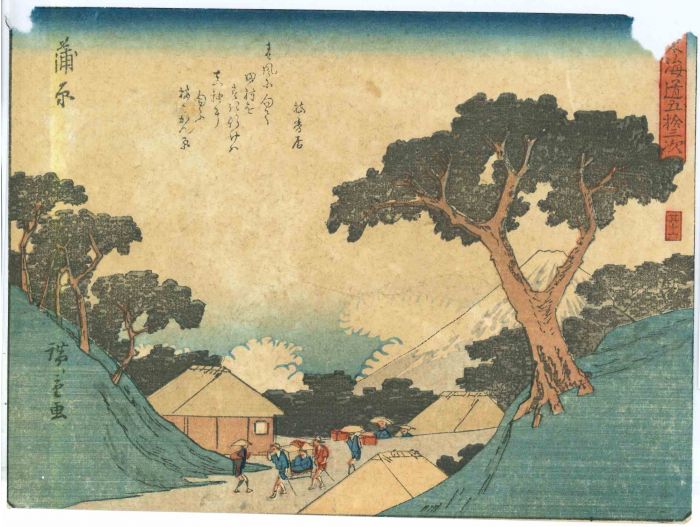

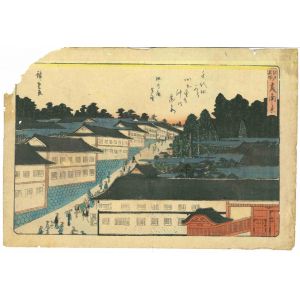
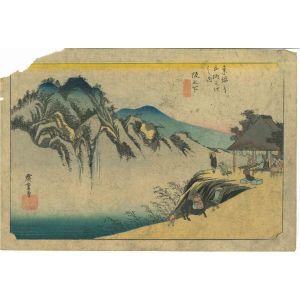
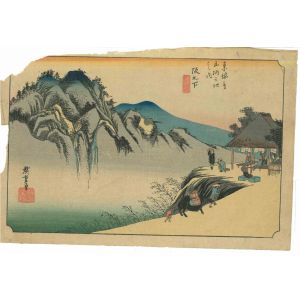

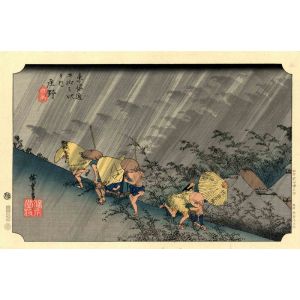
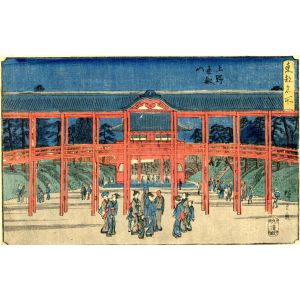
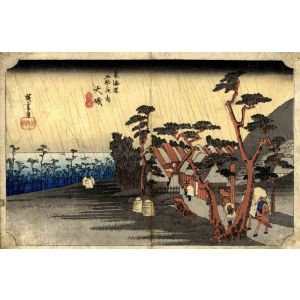
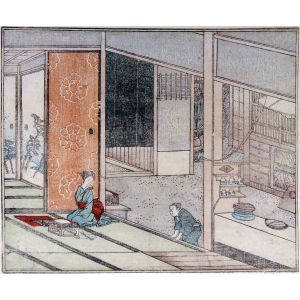
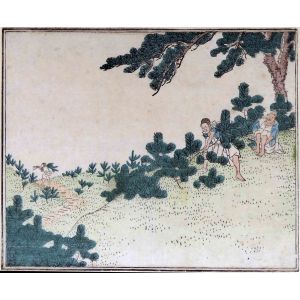
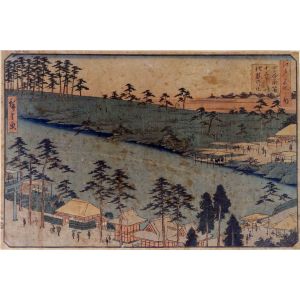
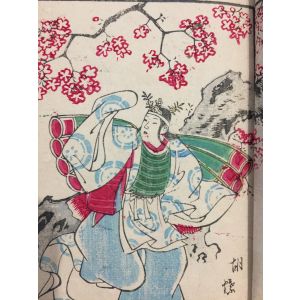
Validate your login